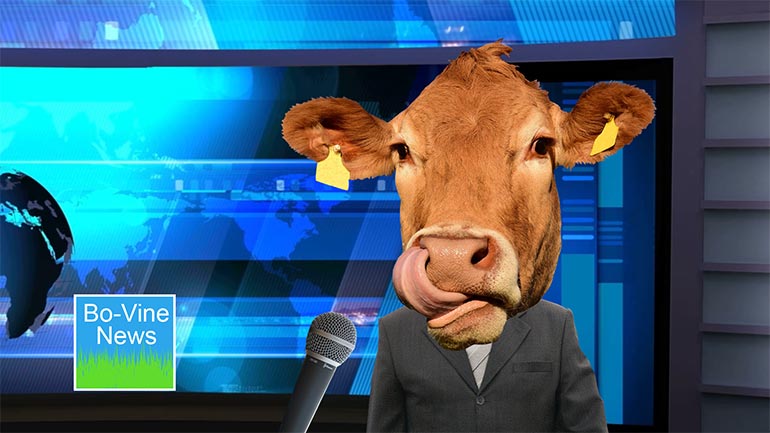ShmoopTube
Where Monty Python meets your 10th grade teacher.
Search Thousands of Shmoop Videos
Econ: What are Consumer Surplus, Producer Surplus, and Allocative Efficiency? 9 Views
Share It!
Description:
What are Consumer Surplus, Producer Surplus, and Allocative Efficiency? Consumer surplus is a measurement of the extra consumer benefits and satisfaction derived when prices are lower than what the market can bear. Conversely, the producer surplus is a measurement of the extra benefit to a producer when the market supports a higher price than the producer’s expected sales price. Allocative efficiency is a characteristic of the market that measures the degree of information in the market and the resultant maximum level of benefit enjoyed by all parties involved when capital is spent the most efficiently.
Transcript
- 00:00
And finance Allah shmoop What Our consumer surplus producer Surplus
- 00:07
and Alec A tive efficiency shmoop in economics Surplus happens
- 00:13
when you're getting more than you bargained for When the
- 00:16
sweet smell of surplus is in the air it means
- 00:17
somebody got a great deal either a consumer or a
Full Transcript
- 00:20
producer If you're a consumer surplus means you paid less
- 00:24
for a good or service then you would have been
- 00:27
willing to pay For example let's look at a Karlis
- 00:30
pregnant city dweller whose water just broke Yeah since the
- 00:34
baby's saying It's Hypo time A mom's willing to pay
- 00:39
a lot of money for a new uber to the
- 00:41
hospital She might even be willing tio by the uber
- 00:44
car there She really rather not have her baby's first
- 00:47
sight to be that of a rat running into a
- 00:49
gutter with an entire slice of pizza sending the wrong
- 00:52
message You know but since it's just a normal of
- 00:54
uber ride on a normal day in normal time well
- 00:57
she ends up paying a normal price for that uber
- 00:59
ride to the hospital because the benefit she's getting is
- 01:02
much higher than the price she'd be willing to pay
- 01:04
for that ride She's reaping a consumer surplus on that
- 01:08
ride Well consumer surpluses that area on your typical supply
- 01:11
and demand curve right under the demand curve there but
- 01:14
above where the two curves cross like right in there
- 01:17
Which makes sense if you think about it the demand
- 01:19
curve which is also the marginal utility curve represent what
- 01:22
you're willing to pay for a thing right What seems
- 01:25
fair Anything above that line has you saying Hey man
- 01:28
what a rip off No way No way I'm paying
- 01:31
that much while anything below that line has you saying
- 01:34
Wow What a great deal Too good to pass up
- 01:36
if you ask me if your producer Well surplus means
- 01:39
you can get away with selling a good or service
- 01:41
for a higher price than you would have been willing
- 01:44
to sell it for Cha Ching Take virtual reality headsets
- 01:48
Well the first V R headsets were the only ones
- 01:50
on the market making them rare and you know super
- 01:53
hi tech gyms The sole producer of the V R
- 01:55
headsets capitalized on the V R hype and the rarity
- 01:58
of it all by setting prices is high much higher
- 02:01
than the price they needed to sell them at in
- 02:03
order to cover all the cost that went into making
- 02:05
them In layman's terms we might call this a price
- 02:08
mark up But people were willing to pay that higher
- 02:11
price to look like a blindfolded fool and enter other
- 02:14
realms So that's what the producers charged wouldn't you On
- 02:18
the supply and demand graph producer surpluses the area above
- 02:21
the supply curve which is also the marginal cost curve
- 02:24
but below where the two curves cross right in there
- 02:27
The actual line of supply curve is what producer willing
- 02:29
to sell their product for they won't sell anything below
- 02:32
the line since that would mean they wouldn't even be
- 02:34
covering their marginal cost like they'd be losing money on
- 02:37
every sale But selling above the line well thats extra
- 02:40
profits The higher producers can set their prices above their
- 02:43
marginal costs assuming consumers are willing to pay for it
- 02:46
Well the more profits the producer surplus They're reaping what
- 02:50
happened when Mohr companies started to make Mohr v R
- 02:53
headsets and there was competition in the marketplace with Mohr
- 02:55
v R Options on the market v R Headsets became
- 02:58
less rare When things to buy become more common prices
- 03:02
go down Yeah whereas one company making V R headsets
- 03:05
used to enjoy the make it rain monopoly power of
- 03:09
price setting multiple companies making V R headset makes the
- 03:12
market competitive When consumers air shopping around in comparing prices
- 03:16
producers turning to price takers that is they can no
- 03:19
longer sell their V R Headset said Well pretty much
- 03:22
any price they want at such high prices because consumers
- 03:25
will just go buy the same thing cheaper elsewhere Competition
- 03:29
makes producer surplus shrink and shrink away If the V
- 03:32
R headset market was perfectly competitive which would be all
- 03:35
the our headsets made by all producers were exactly the
- 03:38
same Well then producer surplus would pretty much completely disappear
- 03:42
meaning it was a total commodity market when both consumers
- 03:45
and producers feel like they're getting a fair shake or
- 03:48
a fair trade while money for v R headsets In
- 03:50
this case we have what's called Alec a tive efficiency
- 03:53
Well the elegant efficient point is we're supplying demand or
- 03:56
marginal cost and marginal benefit Cross consumers feel like they're
- 04:01
getting what they paid for not getting ripped off and
- 04:03
not getting a deal Producers are no longer rolling around
- 04:06
in beds covered in producer surplus money but they're not
- 04:09
losing money either When things were sold at analogue a
- 04:12
tive efficient level everybody's getting what they paid for no
- 04:15
more no less All the value is fair Which yeah
- 04:18
means that where their surplus there's inefficiency right If either
- 04:22
consumers or producers feel like they're getting a deal a
- 04:25
surplus while then the market isn't efficient Adam Smith's invisible
- 04:29
hand does its best to slap surplus out of the
- 04:31
markets with competition Making things fair for both sides doesn't
- 04:35
always work out that way But while the invisible hand 00:04:38.14 --> [endTime] you know does what it can
Up Next
GED Social Studies 1.1 Civics and Government
Related Videos
What is bankruptcy? Deadbeats who can't pay their bills declare bankruptcy. Either they borrowed too much money, or the business fell apart. They t...
What's a dividend? At will, the board of directors can pay a dividend on common stock. Usually, that payout is some percentage less than 100 of ear...
How are risk and reward related? Take more risk, expect more reward. A lottery ticket might be worth a billion dollars, but if the odds are one in...




